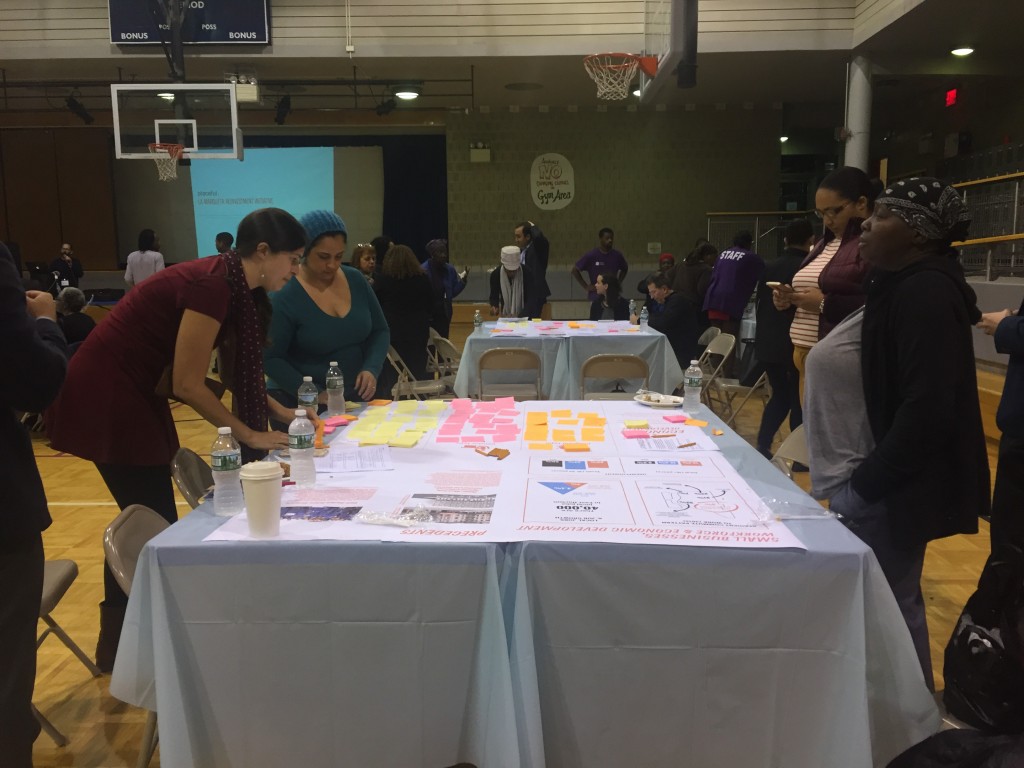On Tuesday November 1st, Masters of Regional Planning students attended the La Marqueta and Park Avenue Commercial Corridor Public Workshop hosted by Placeful. The workshop was held in collaboration with the office of NYC Council Speaker Melissa Mark-Viverito, the office of Manhattan Borough President Gale Brewer, Manhattan Community Board 11, and the New York Academy of Medicine.

La Marqueta and the Park Avenue Commercial Corridor are cultural and historic landmarks of the East Harlem community. While the community is rich in cultural traditions and has wonderful human assets, it also has some of the city’s highest rates of food insecurity, crime, poverty and chronic illness. Located in a city-owned space, La Marqueta has been a thriving market place since the 1930’s, filled with stalls and push cart vendors. The market was seen as an epicenter within the community, allowing residents to come together, connect, and share food. Today, La Marqueta is seen as a major missed opportunity as it struggles to survive in a time of gentrification. Due to acute disinvestment, the main goal of the community is now to revitalize and reinvigorate this once vital market place. The East Harlem neighborhood was recently proposed for upzoning along Park Avenue, and engaging in a direct dialogue with the residents of this community will help the city to identify those resident’s needs, and will inform suggestions in various programming sectors – including the impacts of rezoning.

This fall’s M.R.P. workshops have explored how reinvesting in the market and the commercial corridor can implement recommendations from the community across multiple policy areas – including food equity, arts & culture, health, workforce training, and economic development. However, a major concern of the residents is the inclusion of affordable housing units, as they are anxious about whether the upzoning is enough to trigger Mandatory Inclusionary Housing (MIH). Another concern raised at the meeting was that residents will likely push back once they realize what the new buildings will look like, and how different the neighborhood will be. Currently, there are no visualizations included in Department of City Planning’s report to the community.

